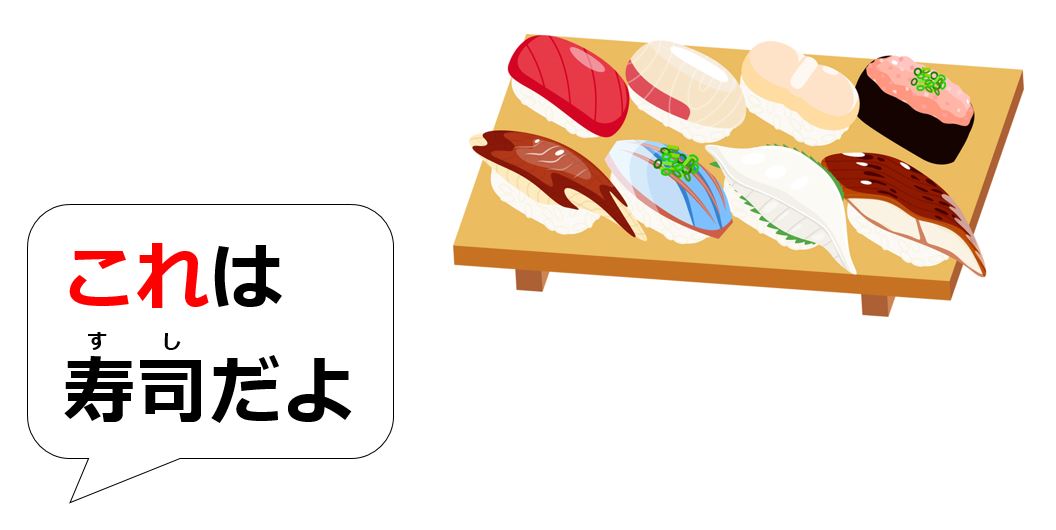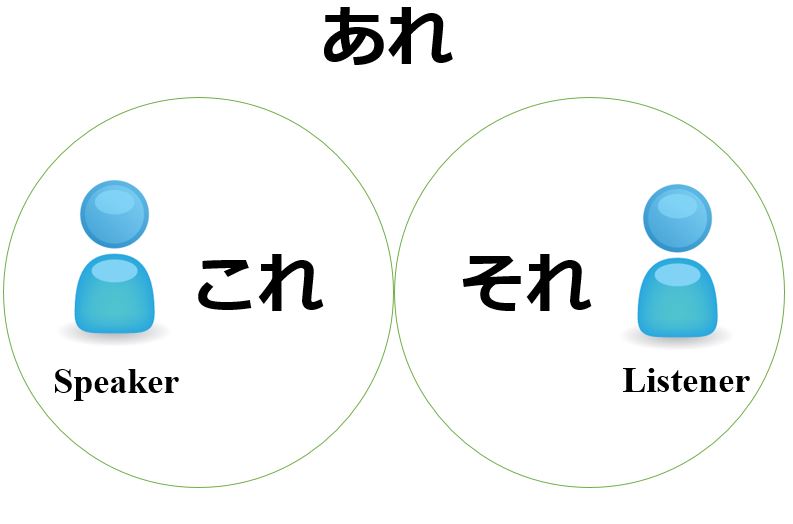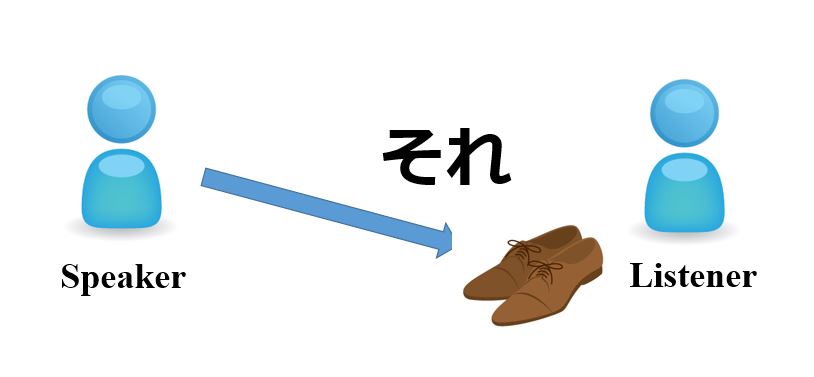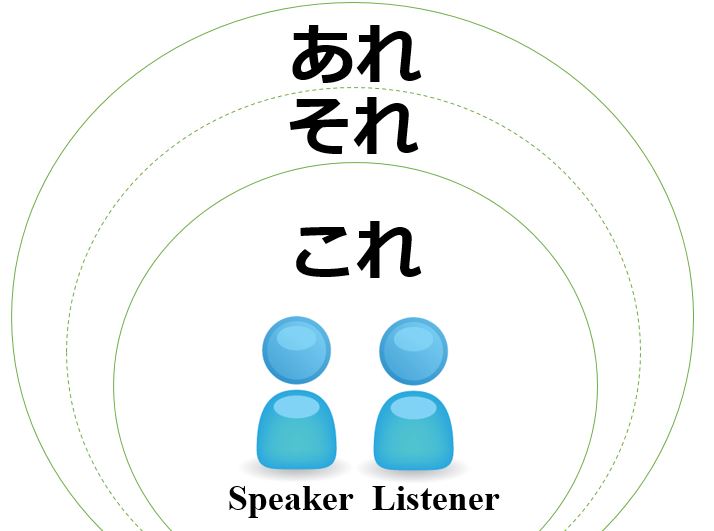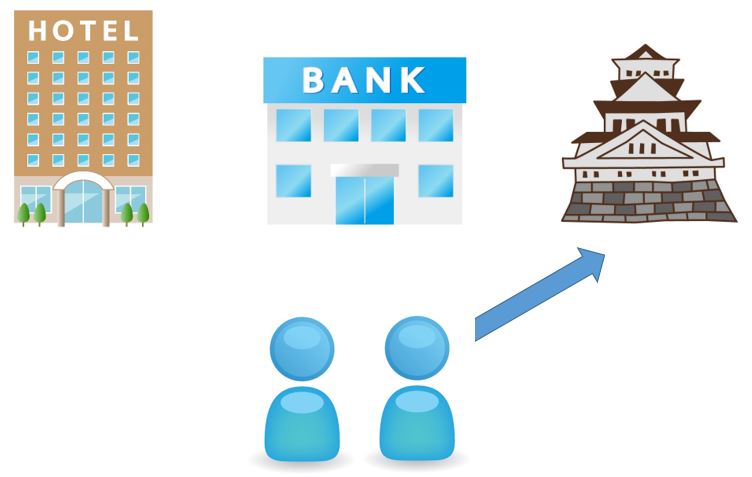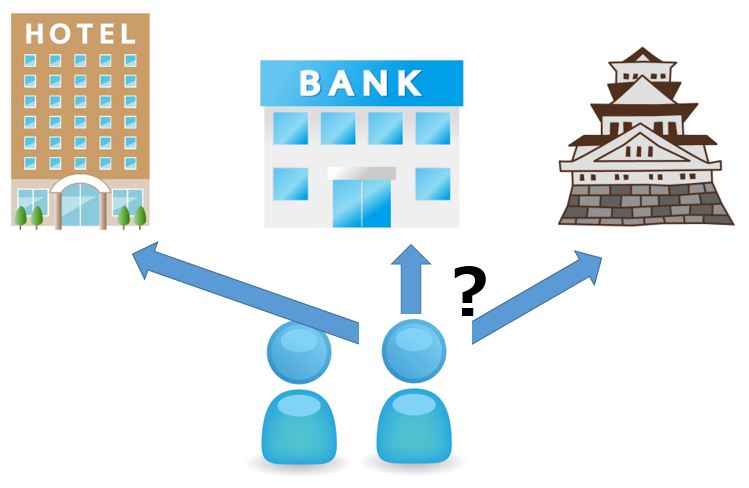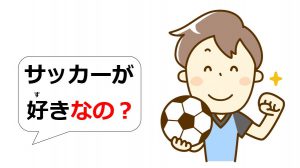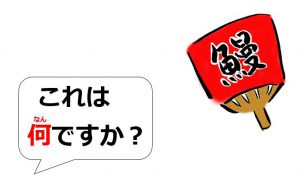Last time, you learned question markers か and の with closed questions, such as “田中さんは大学生ですか?” and “田中さんは大学生なんですか?” When it comes to open questions, objects you’d like to ask are likely to be ones you don’t know. What should you describe such things? This is where demonstratives come into play.
Explanation for Japanese Demonstratives: これ, それ, あれ, and どれ
In English, you have demonstratives like “this” and “that.” They have several functions, e.g. pronouns: “this is good,” determiners: “this pen,” proadverbs: “this kind of,” etc. Japanese ones also have almost the same functions. In this lesson, we will focus on the function of pronouns in order to explain the concept.
The Usage of これ, それ, and あれ
First of all, let’s start learning the basic concept. Proper demonstratives are determined by where objects are. Take a look at the following pictures.
When Speakers and Listeners Are at Different Places
| これ | This one | Near speakers |
| それ | That one | Near listeners |
| あれ | That one over there | Far from both |
| どれ | Which one | Unknown |
That’s simple, isn’t it? The important point here is that the concept of the plurality in Japanese is completely different from English. For example, when you describe shoes in the following picture by demonstrative, you will probably use “those.” However, you have to use それ in Japanese, though それら is the plural form of それ.
| それは靴(ですか)? Are those ones shoes? |
| (うん / はい)、これは靴(だ / です)よ。 Yes, these are shoes. |
それ and これ in the above examples are the demonstrative pronouns for the same object. *We will tackle どれ in detail later.
When Speakers and Listeners Are at the Same Places
| これ | This one | Near speakers |
| それ | That one | In between これ and あれ |
| あれ | That one over there | Far from speakers |
| どれ | Which one | Unknown |
Unlike the first case, the border of それ is not clearly defined. Thus, これ and あれ are more often used than それ.
| あれは富士山(ですか)? Is that one over there Mt. Fuji? |
| あれは富士山じゃ(ない / ありません)よ。 That one over there is not Mt. Fuji. |
Here, both of あれ indicate 富士山. In this way, you need to identify what demonstratives indicate depending on positions.
[adsense]
Wh-question: どれ “Which One”
With the picture above, you say “あれは城ですか (Is that one over there a castle)?” because the object is far from the speaker, which is a suitable situation to use あれ. Then, this is a closed question. You’re asking whether that one over there is a castle or not.
By contrast, when you ask a question in order to specify something, in this case it’s to specify which one a castle is, you say “どれが城ですか?” The structure is very simple. You just replace あれ with どれ. Here are more examples.
| これは寿司(だ / です)。 This one is Sushi. |
| これは寿司(ですか)? Is this one Sushi? |
| どれが寿司(ですか)? Which one is Sushi? |
| あれはバス停(だ / です)。 That one over there is a bus stop. |
| あれはバス停(ですか)? Is that one over there a bus stop? |
| どれがバス停(ですか)? Which one is a bus stop? |
| それは箸 (だ / です)。 Those ones are chopsticks. |
| それは箸(ですか)? Are those ones chopsticks? |
| どれが箸(ですか)? Which ones are chopsticks? |
Identifier Particle が with Wh-questions
| どれが | 天ぷら | (ですか)? |
| Subject: Identifier | Complement | Question Marker |
| Which one is Tempura? | ||
When question words are used as subjects, you always use the particle が. This is one of the functions of が called “Identifier.” Using question words mean that you haven’t specified what you’re talking about, and thus topic particle は cannot be used. Here are more examples.
| どれが日本語の本(ですか)? Which one is a Japanese book? |
| どれが美味しい(ですか)? Which one is delicious? |
| どれが丈夫(ですか)? Which one is durable? |
On the other hand, you often face this kind of structures.
| どれに(入る / 入りますか)? |
| どれを(買う / 買いますか)? |
| どれ(ですか)? |
This is because the どれ doesn’t work as subjects in the contexts. As you remember, subjects are often omitted when the contexts clearly tell what or whom you’re talking about. In conversation, it’s more natural to omit somethings obvious. Let’s check the following breakdown.
| [私たちは] | どれに | 入る / 入りますか? |
| [Topic / Subject] | Destination | Verb |
| Which one will [we] enter? | ||
| [あなたは] | どれを | 買う / 買いますか? |
| [Topic / Subject] | Direct Object | Verb |
| Which one will [you] buy? | ||
| [ホテルは] | どれ | (ですか)? |
| [Topic / Subject] | Complement | Question Marker |
| Which one is [the hotel]? *Said when someone like a taxi driver told you that you arrived at the hotel. |
||
By considering particles’ functions and the presence of subjects, you can easily figure out what wh-questions mean. One last thing, if demonstratives and question words appear before question marker の, they will conjugate as same as nouns. That is to say, if you express the third example with the question marker の, it will be like this: [ホテルは] どれ(なの / なんですか)?
Summary
- Japanese demonstratives are これ, それ, あれ, and どれ.
- The proper usage will be determined by object’s positions.
- The particle が is always used if question words are subjects
We think that Japanese demonstratives are similar to English ones and not complicated very much. Now, you can express “this,” “that,” “that one over there,” and “which” in Japanese. On the other hand, this is still part of the explanations. Next we will pick up the rest of functions such as determiners and proadverbs with various wh-questions.

